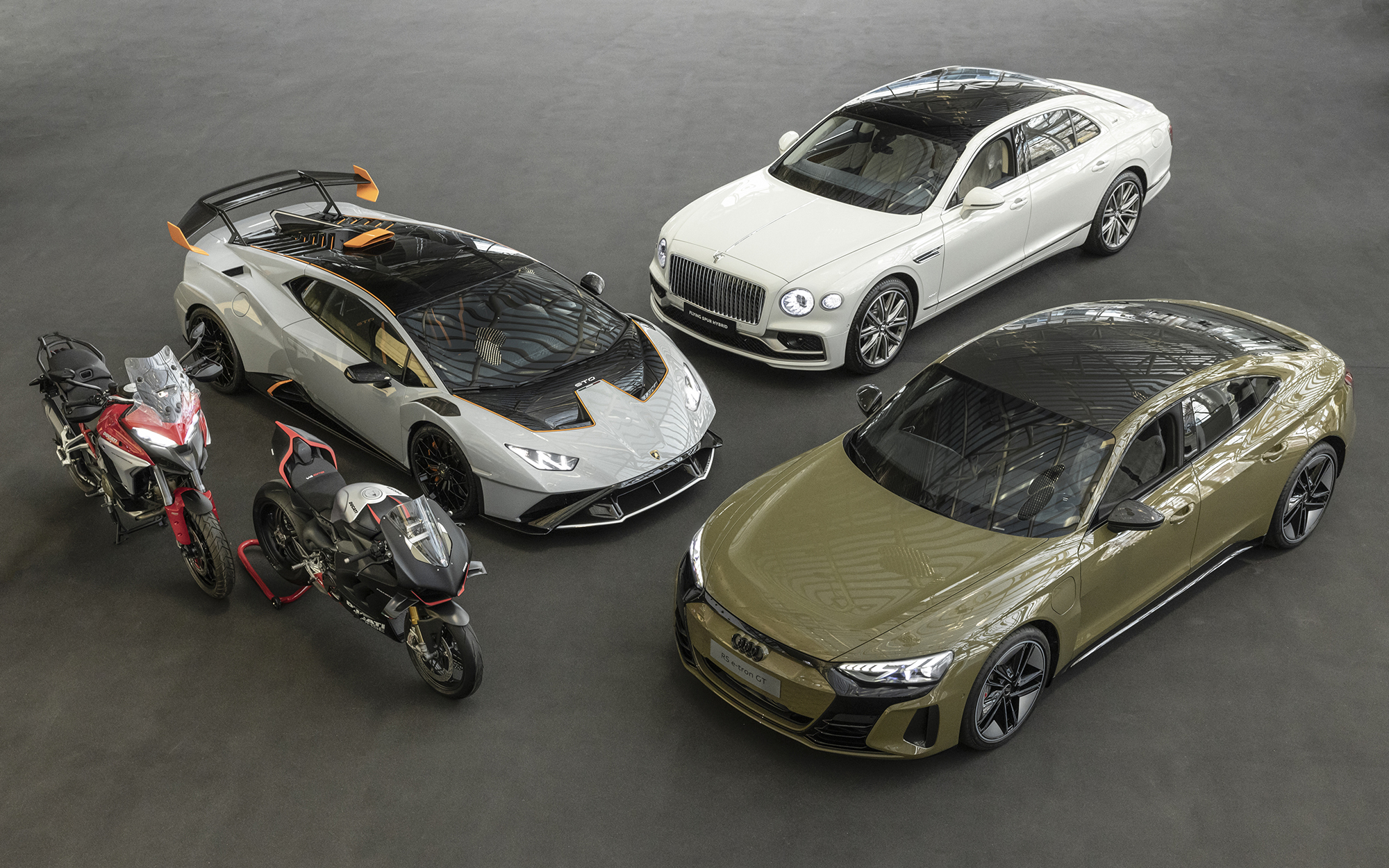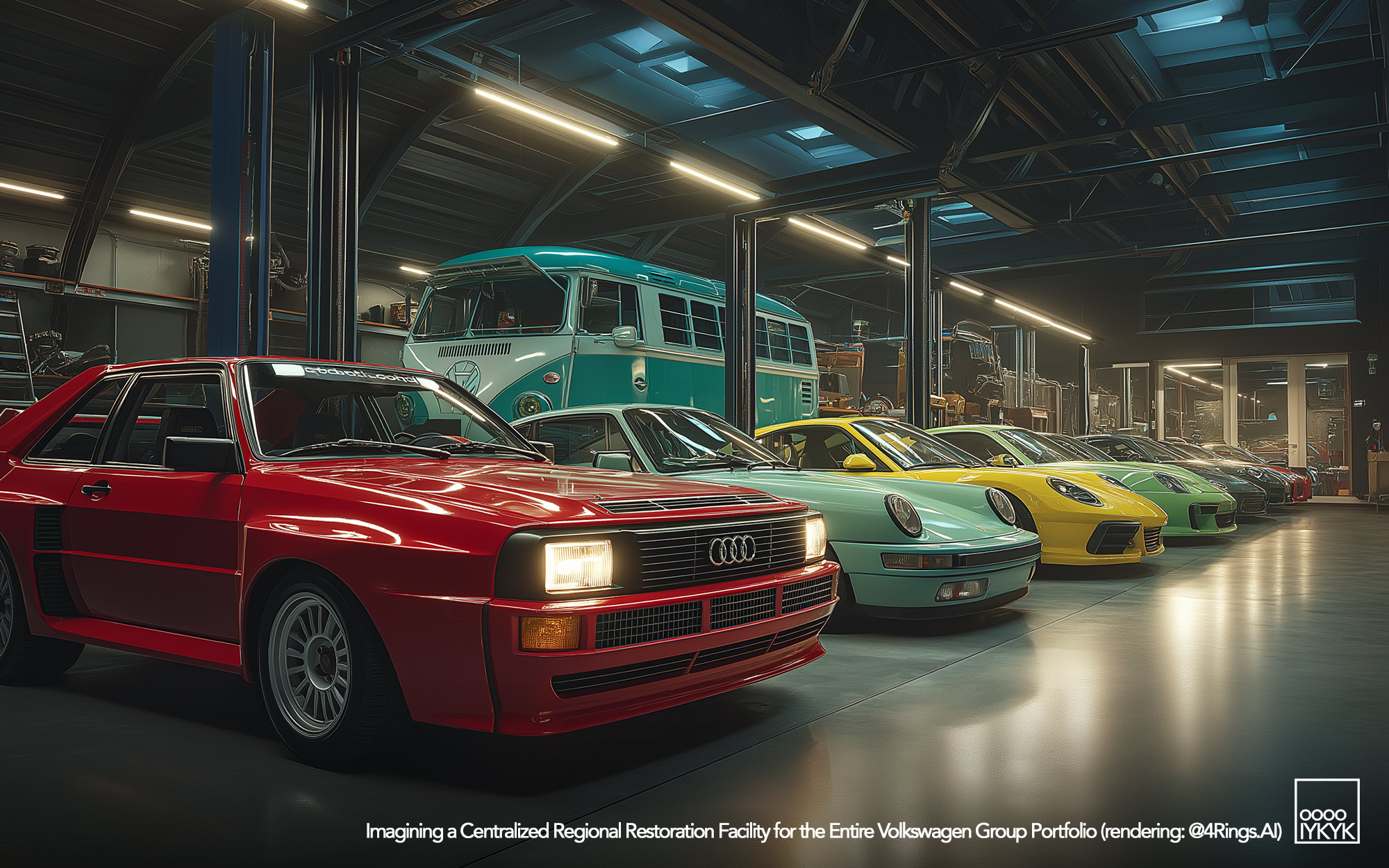ooooIYKYK, ISSUE #oo2o
Over the last few weeks, the clarity of need for an underlying call for unity when times get tough is obvious. The world seems to be a challenging space, where leaning on each other despite our differences could be a real advantage.
This definitely applies in the Audi world. These last few weeks, we’ve seen the Concept C launching on a Porsche-derived chassis, hear rumors of the Volkswagen Golf R‘s potential use of the Audi 5-cylinder 2.5 TFSI engine as a path toward passing EU7 regulations that would extend the motor. I even caught up with Megan Closset, my friend at Volkswagen to talk about the history of the Golf R Spektrum program that was a creative and successful way of sliding more unique cars into a market known for instant gratification purchases. The diversity and vastness of the Volkswagen Group has definitely been on point in the storytelling you’ll find on the ooooIYKYK website.
For car aficionados, one of the cooler aspects of the Volkswagen Group is just how talented this automotive multinational is at making its brands feel so distinct. The corporation that brings you the Audi RS 6, GTI, Porsche 911 and Lamborghini Temerario clearly knows a thing or two about differentiating details. Even on more closely aligned models – take Audi RS Q8, Lamborghini Urus, Bentley Bentayga and Porsche Cayenne, there’s remarkable space between these corporate cousins .Audi, Porsche, VW, Bentley, and Lamborghini each carry their own identity, even while sharing much of the engineering underneath.
That balance—shared platforms with brand-specific tuning, design, and personality—is why the Volkswagen Group has become such a juggernaut. The MQB platform lets everything from a Skoda Fabia to a Golf R to Volkswagen Atlas and an Audi RS 3 exist, but each has its own features and flavor. MLB gave us the Cayenne, Touareg, and Q7, which somehow feel like entirely different cars. This kind of differentiation builds loyalty and commands premium pricing. It’s why the Group can sell both the people’s Golf and the hand-stitched Bentley Batur.
But differentiation isn’t free. Developing brand-specific hardware, interiors, and tuning stacks costs billions. Factor in high labor costs in Germany, tariffs in the U.S. that have already shaved billions off earnings, and slower sales in China, and you see the squeeze. Volkswagen passenger cars alone have recently missed cost-cutting goals by several billion euros. Add in the colossal expense of the EV transition—SSP, batteries, software—and margins are under real pressure.

That raises the question: where could the Volkswagen Group lean harder on economies of scale? For me, the answer isn’t in the core products—no one wants a Bentley that feels like an Audi, or a Porsche that drives like a VW. Instead, it’s in the enthusiast-side businesses where duplication makes less sense.
Take motorsport. Every brand running its own programs and logistics is costly. A shared Volkswagen Group motorsport backbone—handling safety engineering, homologation, parts logistics—could free up brands to focus on what makes their cars special. Same for heritage and restoration. Each marque maintains its own tiny vintage parts warehouses and restoration efforts. Imagine the efficiency of a centralized Group Heritage Center… at least in major markets like North America and China, with shared catalogs and reproduction tooling, but brand-specific finishing. Driving experiences, too, could pool logistics while keeping the customer-facing identity pure.
It’s worth remembering that the idea of separation into brand-only stores under homogenized [Brand Name] of [City Name] schema is relatively new. In the mid-20th century, dealers like Max Hoffmann in Manhattan or John von Neumann in California sold multiple European marques under one roof. Curation was the value in those days, not strict brand isolation. While today’s franchising model makes that unthinkable for dealerships, the logic could apply neatly to tertiary businesses: let’s keep the brands separate in the showroom, but not behind the curtain where it only adds cost.
And maybe not even behind the curtains in customer facing portions of restoration or motorsport businesses. Likely the customer walking into a U.S. market space meant for recommissioning an old 911, overhauling a Lamborghini Countach or restoring a Volkswagen Bus is probably enthusiast enough that seeing this mixed presence under one roof is more strength than weakness. That’s certainly the case in places like the sprawling BMW Welt customer reception area in Munich or the Volkswagen Group’s own massive Autostadt facility in Wolfsburg.
The trick is protecting what matters: driving character, materials, design, heritage and, yes, on-brand retail space that is the front line of customer reception. Those are non-negotiable. An RS 6 must feel like an RS 6; a Lamborghini must remain extreme; a Bentley must be opulent. But if a shared back office, parts depot, or motorsport logistics team makes it cheaper to preserve those qualities, enthusiasts win too.
VW Group’s differentiation has given us an embarrassment of riches. Now, with tariffs, labor costs, and EV investment piling up, it may be time to share more of the unglamorous stuff—so the glamorous can keep thriving.
NEXT UP THE LATEST NEWS & FEATURES
CURATED PODCASTS & VIDEO CONTENT
I Bought an Audi A2! | Doug DeMuro
Audi S4 Biturbo 715hp Stroker – Crazy Engine Swap Project | Auditography
IAA Mobility 2025 – Design Report | Auto Didakt
One Destroyed Car Saved Spyker | VINwiki
Donkervoort F22: a Lotus Seven from the Future | Henry Catchpole – The Driver’s Seat
The New 2025 Audi SQ5 Is King of the Small, Sporty Luxury SUVs | Doug DeMuro
VW CEO Oliver Blume on Tariffs, China EVs & Münich IAA | Bloomberg Television
This story is the basis of the 19th issue of the ooooIYKYK Newsletter on Substack. If you’ve got too much going on in your life and don’t want to keep coming back to this website just to check in and see what I’m writing about, signing up to the ooooIYKYK Newsletter is an excellent way to get this content coming directly to you in your inbox. Subscribe at Substack via the link below, and consider becoming an optionally paying subscriber if you want to help support the viability of this title.


